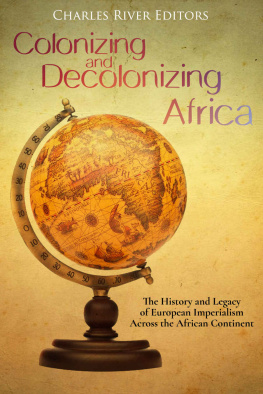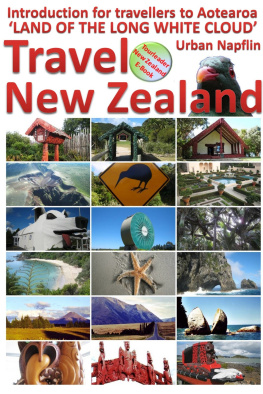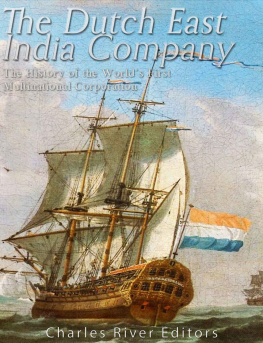The British Colonization of New Zealand: The History of New Zealand from Settlement to Dominio n
By Charles River Editors

A mid-19 th century painting of a Scottish Highland family in New Zealand
About Charles River Editors

Charles River Editors is a boutique digital publishing company, specializing in bringing history back to life with educational and engaging books on a wide range of topics. Keep up to date with our new and free offerings with this 5 second sign up on our weekly mailing list , and visit Our Kindle Author Page to see other recently published Kindle titles.
We make these books for you and always want to know our readers opinions, so we encourage you to leave reviews and look forward to publishing new and exciting titles each week.
Introduction

The Colonization of New Zealand
When one house dies, a second lives. - Mori proverb
By the mid-17 th century, the existence of a land in the south referred to as Terra Australis was generally known and understood by the Europeans, and incrementally, its shores were observed and mapped. Van Diemens Land, an island off the south coast of Australia now called Tasmania, was identified in 1642 by Dutch mariner Abel Tasman, and a few months later, the intrepid Dutchman would add New Zealand to the map of the known world.
At the time, the English were the greatest naval power in Europe, but they arrived on the scene rather later. The first to appear was William Dampier, captain of the HMS Roebuck, in 1699, after he had been granted a Royal Commission by King William III to explore the east coast of New Holland. By then, the general global balance of power was shifting, and with the English gaining a solid foothold in India, their supremacy in the Indian Ocean trade zone began. The Dutch, once predominant in the region, began slowly to lose ground, slipping out of contention as a major global trading power. So too were the Portuguese, also once dominant in the region. It was now just the French and the English who were facing one another down in a quest to dominate the world, but their imperial interests were focused mainly in India and the East Indies, as well as the Caribbean and the Americas. As a result, the potential of a vast, practically uninhabited great southern continent did not yet hold much interest.
By then the world was largely mapped, with just regions such as the Arctic Archipelago and the two poles remaining terra incognita. A few gaps needed to be filled in here and there, but all of the essential details were known. At the same time, a great deal of imperial energy was at play in Europe, particularly in Britain. Britain stood at the cusp of global dominance thanks almost entirely to the Royal Navy, which emerged in the 17 th and 18 th centuries as an institution significantly more than the sum of its parts. With vast assets available even in peacetime, expeditions of science and explorations were launched in every direction. This was done not only to claim ownership of the field of global exploration, but also to undercut the imperial ambitions of others, in particular the French.
In 1769, Captain James Cooks historic expedition in the region would lead to an English claim on Australia, but before he reached Australia, he sailed near New Zealand and spent weeks mapping part of New Zealands coast. Cook later asserted that the only major sources of timber and flax in the Pacific region were to be found in New Zealand and Norfolk Island, which would prove crucial to the British Empire and the Royal Navy in particular, and Cook also provided a firsthand account of a tense standoff with New Zealands indigenous natives on the shoreline. Over the next 90 years, Cooks journey and his account would lay the basis for British activities in the region, and those activities would forge the modern history of New Zealand at a great cost.
The British Colonization of New Zealand: The History of New Zealand from Settlement to Dominion analyzes the expeditions that discovered New Zealand and the early settlements and conflicts waged there from 1650-1850. Along with pictures of important people, places, and events, you will learn about the European settlement of New Zealand like never before.
.
Initial Settlement Activity
Abel Tasman has long been considered the first European to make contact with New Zealand and its people, but new scholarship has theorized that the first European encounter with New Zealand took place over a century earlier by the Portuguese. It was in the year 1498 that the first Portuguese flotilla arrived on the coast of India, seeding Portuguese settlements along the coasts of India and East Africa. It has since been discovered that a great many of the fundamental achievements in exploration attributed to British, and other European explorers, were in fact preceded by Portuguese travelers and explorers. In this instance, the basis of the theory is simply that Portuguese exploradores were simple and illiterate men, and many of their early feats of exploration were never recorded. It is also true that they explored the trade in slaves, and thus they courted anonymity. Quite often, Portuguese travelers and commercial explorers were simply Portuguese speaking natives or half-castes, and their work also tended to be disregarded.
The notion, therefore, of Portuguese ships making first landfall in Australia and New Zealand is not entirely outlandish. Upon rounding the southern tip of the Indian subcontinent, and crossing the Bay of Bengal, the Malay Archipelago forms a natural conduit in the direction of Australia. The Portuguese founded numerous settlements in these regions, most notably Timor, located just a few hundred miles across the Sea of Timor to the coast of Western Australia. There is also strong material evidence that the Portuguese were aware of the existence of Terra Australis , in particular in reference to the Dieppe Maps, a series of sixteenth century French world maps that portray the Java la Grande as corresponding to the northwest coast of Australia and scattered with Gallicized Portuguese place names. Artifacts thought to be of Portuguese origin have also been unearthed in adjacent coastal regions, and so the theory of prior Portuguese discovery of Australia, if not New Zealand, carries water. It is certainly not a great leap of imagination then to suppose that Portuguese ships, having come this far, might cross the Tasman Sea and set eyes on New Zealand.
Curiously, evidence of very early Spanish visits to New Zealand is a little bit stronger. In the northern Spanish city of La Coruna, a pohutukawa tree, native only to New Zealand, can be found. This specimen is estimated to be between 400 and 500 years old, and it is hard to imagine how a tree like that reached the Spanish coast unless a Spanish ship had collected it.
Either way, the first map to feature the name Nova Zeelandia was published by the Dutch in 1645, and no substantive European effort was made to exploit or visit this territory until at least a century later. After Abel Tasman, the next recorded European visit would be that of Captain James Cook.
In 1767, the Royal Society persuaded King George III to allocate funds for it to send an astronomer to the Pacific, and on January 1, 1768, the London Annual Register reported, Mr. Banks, Dr. Solander, and Mr. Green the astronomer, set out for Deal, to embark on board the Endeavour, Captain Cook, for the South Seas, under the direction of the royal society, to observe the transit of Venus next summer, and to make discoveries. Mr. Banks was Joseph Banks, a botanist, and he brought along Dr. Daniel Solander, a Swedish naturalist. Charles Green was at that time the assistant to Nevil Maskelyne, the Astronomer Royal. The expedition, which would leave later in 1768, would be captained by Cook, a war veteran who had recently fought in the French & Indian War against the French in North America.






















